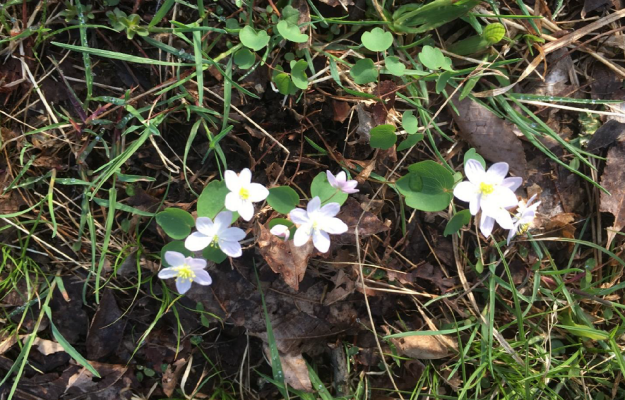Of Earth and Trees
By Ryan Reed
After many weeks of quarantine, it has never been clearer. Oh, how we need our earthly treasures! A quick glance outside reveals little scarlet flowers of the red maple next door. It’s not necessarily how they look, contrasting so nicely with the tree’s gray bark. It’s as much about how it makes one feel.
Newly emerging lettuce and spinach in the garden, snow geese in the field, and a voracious groundhog provide respite from the minutiae of teleworking and confinement. A brief trip to the local stream might yield the beautiful brook trout, but if not, certainly a few sights and sounds that feed the soul.

Lucky, we are, to behold such grandeur. How anyone could not feel this deep sense of connection seems absurd, but the evidence abounds.
Not all recent sights and feelings have been pleasant. There was litter along the stream, and invasive plants everywhere. Its banks obviously fallen and algae growing in dense mats, the stream is showing signs of sickness. Some nearby plants never went fully dormant, owing to one of the warmest winters on record. Feeling connected to nature, as rewarding as it is, can be unsettling once you understand what you are seeing.
They say that with education comes responsibility, and this very premise was likely on the minds of the people 50 years ago when celebrating the first Earth Day. The similar annual timing of Arbor Day (today), is probably no coincidence.
To say that trees are vital to this earth is no overstatement.

Quarantine may limit our options, but it definitely gives time for contemplation. Let us all consider our impact on this beautiful earth and learn about ways to make a difference. Let us organize, educate, and recruit. Just as surely as we can beat Covid-19, we can place our healing hands on these lands and waters.
Here are ten ideas:
- Do a streamside cleanup
- Install higher efficiency water and light fixtures in the home
- Plant native trees, shrubs, and flowers in your yard
- Participate in local conservation plantings
- Contribute to a local conservancy by volunteering and/or paying dues
- Lobby elected officials to do more conservation work
- Provide conservation education to anyone who will listen
- Compost food waste and plant a vegetable garden
- Buy a hunting or fishing license (aids fish and wildlife habitat)
- Reduce use, reuse products, and recycle as a last resort
Our planet and forests do so much for us, but they need our help. It is not enough to contemplate. It is time for action. Their survival, (and ultimately ours), depends on it!

“The greatest threat to our planet is the belief that someone else will save it.” -Robert Swan
About the Author
Ryan Reed is an Environmental Education Specialist in the Department of Conservation and Natural Resources, Bureau of Forestry. He possesses degrees in Wildlife and Fisheries Science and Wildlife Technology, while currently pursuing a master’s degree in Environmental Pollution Control. He has also worked for the Pennsylvania Game Commission, and taught high school sciences for 11 years. He is especially interested in biodiversity and ecology. A lifelong hunting and fishing enthusiast, Ryan resides in Harrisburg, PA. This article was originally published in the Bureau of Forestry’s weekly “Forest Fridays” e-blast.



